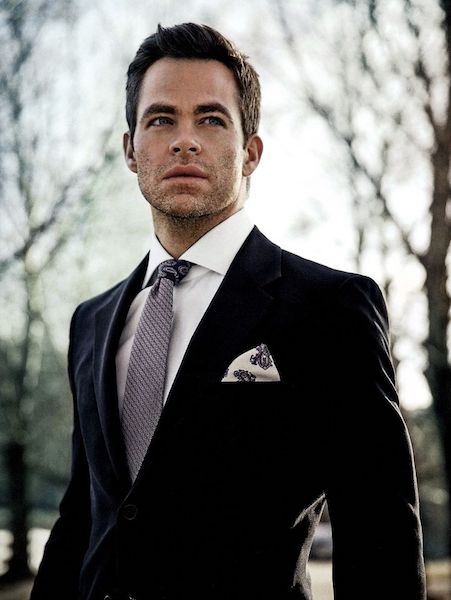The History Of The Pocket Square
A pocket square is a simple way to add a touch of flair to a jacket, and is primary used to elevate your look to give you a more stylish appearance. But where did the pocket square originate from? Below we've outlined a brief history of the pocket square.
You can see our full collection of over 100+ classic and contemporary pocket square designs here: Pocket Square Collection.



The Origins
Some people believe that the pocket square in one form or another can trace its origins back to ancient Egypt, where small linen cloths were dyed with a red powder that indicated they were used for decorative purposes and as an example of wealth. However, this is quite a leap of faith and small pieces of coloured cloth don’t necessarily translate directly into what you would consider a modern day pocket square.
There are also those that trace it back to the Ancient Greeks who carried a cloth with scented perfume in order to ensure they always had a pleasant smell nearby or the Romans who used pieces of cloth to start the Gladiatorial Games, with the event starting when the Emperor dropped his handkerchief.
Some claim the first use of a handkerchief being worn as an accessory was in 800’s where members of the Catholic Church would attach a white handkerchief to their left arm as a representation of their devotion to God and the church.
Finally, a popular theory often espoused is that King Richard II of England was the first person to wear a handkerchief as a fashion accessory while on the throne between 1377 to 1399, which you can read more about on Wikipedia here: http://en.wikipedia.org/wiki/Handkerchief.
So although it’s clear people have been using squares of material for various uses for hundreds if not thousands of years, it's our opinion that although romantic, many of these explainations don't provide an clear connection between what we now see as the modern day pocket square, and that in true its history can be traced back around 600 years.
Becoming A Fashion Accessory
From the 1400’s, the handkerchief started to became popular throughout Europe with the upper classes as either an accessory or a more practical tool. By this point, pocket squares or pocket handkerchiefs were made from more exotic materials including silk and were embroidered to create beautiful patterns as yet another demonstration of wealth and status. To this point, they still came in many shapes and sizes and like the Ancient Greeks, the French nobles scented their handkerchiefs to overcome the odours of the time resulting from a general lack of bathing facilities.
The best embroidery and lace designs in the 16th Century were being produced in Italy and it is thought they were then imported by Catherine de Medici of Florence into France. These handkerchiefs were considered extremely valuable and were often passed down from generation to generation. The value was often created by the quality and design of the lace being used. The Tudor Monarchs continued this exclusive trend with both Queen Mary and Queen Elizabeth receiving handkerchiefs as presents at New Years and it then started to become prevalent to gift royalty handkerchiefs.
A popular story has it that Marie Antoinette decided that it wasn’t right to have handkerchiefs of all different sizes and so got her husband King Louis XVI to decree that from that point all cloth should be a uniform size of 16” by 16”. This can in part account for the shape and size that we tend to see today.
The Introduction Of The 2 Piece Suit
In the 19th century when the 2 piece suit became the mainstay of gentlemen’s fashion, it occurred to well dressed men that they didn’t want their pristine handkerchiefs mixing with the coins and other dirty objects carried in their pockets and hence transferred it to their top left breast pocket.
This style continued to become more popular into the early 20th century as different folding techniques became prevalent, and the pocket square had now established itself as a key fashion accessory for the gentleman that would take pride in his appearance with squares made of silk, cotton or linen, either patterned or plain becoming very popular with the well dressed gents across Europe and the United States.
As the 20th century went on, linen handkerchiefs started to become less and less popular as functional items and this was furthered by the introduction of the cheaper and easy disposable handkerchief by the Kleenex company. In the run up to the middle of the century, there was a further shift as stars such as James Cagney and Fred Astaire once again helped to popularise the pocket square as a fashion accessory, and everyone from the best dressed gent to the average office worker could be seen wearing one.
As the 20th century wore on, pocket squares once again lot their lustre, partly due to the casualisation of work wear and by the end of the century they were once again almost exclusively limited to dandies.
Modern Times
Since the turn of the Millennium, pocket squares have started to enjoy a renaissance in popularity and becoming an essential part of the outfit of high profile celebrities and fashionistas alike. As the working environment has become more casual, ties have been lost and ill fitting suits have become the norm. For the man that wants to stand out from the crowd the pocket square provides a touch of elegance and style.



What is the purpose of a pocket square? For minimal effort an outfit is subtly upgraded. While it is not recommended to match your pocket square precisely to your tie, taking an accent colour can have a strong effect. While white is the classic and can happily live in your jacket, today witnesses a huge variety of colours, patterns and materials. The pocket square is where even the most conservative outfit can have the most elaborate and striking design included.
Pocket Square Designs
There are three classic options when it comes to pocket square design. There is the flat colour, the repeat design and the print. The repeat pattern was the traditional design for much of the 20th century, and still remains a very popular choice. The print can be anything from historic art works through to modern art, graphic design or photographs.



Consider some of our historical painting pocket squares. When folded these appear striking and dazzling, the perfect conversation starter before you whip out the full painting. While there are no rules as such here, a simple combination is to have either your tie or pocket square patterned and the other plain. As usual the key is in contrast and variety. If your suit or shirt is heavily patterned, go for a more subtle pattern with your square or even go for flat colour.



As for materials, silk pocket squares remain the gold standard, but cotton, wool, and linen could also be considered classics, along with blends to create different textures and weights. The thing to keep in mind is that the lighter the fabric the larger the square needs to be to hold your chosen fold in place.
For a classic silk handkerchief then large volumes can be easily concealed in your pocket. For this reason, go for a generous size over 40cm. This has two advantages: that it won’t disappear into your pocket and a more flamboyant display can be formed, which is more impressive when a shimmering sheet is pulled out of your pocket to refold it. Thicker materials like tweed should reserve themselves to around 30cm since you don’t want too much of that bulk in your pocket. Plenty of newer and more fashionable designs are of this size for this very reason.
To view our full pocket square collection visit our Pocket Square Store.
You can view our video on what goes into our pocket square designs below in our product insight series.
See Our Pocket Squares Below

